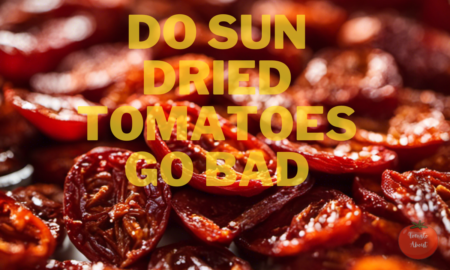If you’re a tomato lover like me, few things are more frustrating than pouring your heart and soul into your tomato plants, only to have them succumb to disease. Trust me, I’ve been there – battling early blight, septoria leaf spot, and all those other tomato killers that can turn your dreams of a bumper crop into an absolute nightmare.
But you know what? It doesn’t have to be that way! Advancements in plant breeding have given us an amazing arsenal of disease-resistant tomato varieties that can withstand many of the most common tomato afflictions. And let me tell you, growing these resilient beauties is an absolute game-changer.
In this article, I’ll share my personal experiences and guide you through the world of disease-resistant tomatoes.Keep reading to learn about it!
Why Disease Resistance Matters
Let’s face it, tomato diseases can be a real nightmare. From those unsightly black spots on the leaves to the dreaded late blight that can wipe out an entire crop, these issues can quickly turn your gardening dreams into a disappointing reality. But fear not, my fellow gardeners! Disease-resistant tomatoes are here to save the day (or should I say, the season?).
Imagine being able to enjoy a bountiful harvest without constantly worrying about the next disease outbreak. With disease-resistant varieties, you can breathe a little easier, knowing that your plants have an extra layer of protection against common threats like early blight, fusarium wilt, and verticillium wilt.
Cherry Tomatoes: Tiny but Mighty
Let’s start our journey with the small yet delightful cherry tomatoes. Don’t let their size fool you – these little guys pack a punch when it comes to disease resistance and flavor. Plus, they’re incredibly prolific, so even if you have a small garden space, you can still enjoy a bountiful harvest.
One of my personal favorites is the ‘Super Sweet 100’ variety. These cherry tomatoes are not only resistant to verticillium wilt, fusarium wilt, and nematodes, but they also boast an incredible sugar-to-acid ratio that makes them burst with sweetness in your mouth. Imagine popping one of these ruby gems straight from the vine – it’s like nature’s candy!
Another cherry tomato that deserves a spot in your garden is the ‘Sun Sugar.’ Resistant to fusarium wilt and verticillium wilt, these golden-orange beauties are as pretty as they are delicious. They’re perfect for adding a pop of color to salads or snacking on straight from the plant.
Plum Tomatoes: The Sauce Stars
Ah, the plum tomatoes – the unsung heroes of the sauce-making world. When it comes to disease resistance, these oblong wonders are true champions. And let’s be honest, what’s better than a homemade tomato sauce made from fresh, juicy plum tomatoes straight from your own garden?
One variety that has stolen my heart (and taste buds) is the ‘Plum Regal.’ Not only is it resistant to verticillium wilt, fusarium wilt, and nematodes, but it also produces an abundance of deep red, meaty fruits that are perfect for canning or cooking down into a rich, flavorful sauce.
If you’re looking for something a little different, check out the ‘San Marzano’ variety. These elongated plum tomatoes are renowned for their intense flavor and low seed count, making them ideal for sauces and pastes. Plus, they’re resistant to verticillium wilt and fusarium wilt, so you can count on a reliable harvest.
Globe Tomatoes: The All-Rounders
When it comes to versatility, globe tomatoes are the true multitaskers of the tomato world. From slicing for sandwiches to roasting for salads, these round beauties can do it all. And fortunately, there are plenty of disease-resistant options to choose from.
One variety that has earned a permanent spot in my garden is the ‘Better Boy.’ Resistant to verticillium wilt, fusarium wilt, and nematodes, these tomatoes consistently produce large, flavorful fruits that are perfect for everything from BLTs to Caprese salads.
If you’re a fan of heirlooms but want the added security of disease resistance, check out the ‘Brandywine Red.’ This variety has been bred to resist several common tomato diseases while still retaining that coveted heirloom flavor and texture. It’s like having the best of both worlds!
Beefsteak Tomatoes: The Showstoppers
Now, let’s talk about the true showstoppers of the tomato world – the mighty beefsteaks. These massive fruits are perfect for slicing and showcasing on a plate, their sheer size and vibrant color make them the stars of any tomato dish.
One variety that never fails to impress is the ‘Big Beef.’ As the name suggests, these tomatoes are absolute behemoths, with individual fruits often weighing over a pound! But don’t worry, they’re not just big – they’re also resistant to verticillium wilt, fusarium wilt, and nematodes, ensuring that you’ll have a reliable crop of these beauties year after year.
Another beefsteak variety that deserves a spot in your garden is the ‘Carmello.’ Not only does it boast resistance to verticillium wilt, fusarium wilt, and nematodes, but it also won the prestigious All-America Selections (AAS) award for its outstanding flavor and performance. Trust me, when you slice into one of these bad boys, you’ll understand why it’s a winner.
Tips for a Successful Tomato Garden
Now, even with disease-resistant varieties, it’s important to follow some best practices to ensure a healthy and productive tomato garden. Here are a few tips that have worked wonders for me:
- Space it out: Proper plant spacing is crucial for good airflow, which can help prevent the spread of diseases. Most tomato varieties should be planted at least 24 inches apart unless you’re trellising and pruning to a single main stem.
- Prune, prune, prune: Don’t be afraid to get your pruning shears out! Removing lower leaves and suckers can improve airflow and prevent soil-borne diseases from spreading to your plants.
- Mulch, my friends: Mulching helps suppress weeds and reduces the risk of soil-borne diseases by creating a barrier between your plants and the soil. I personally love using dried leaves or straw as mulch.
- Be vigilant: Even with disease-resistant varieties, it’s still important to keep an eye out for any signs of disease. If you spot a problem, act quickly to remove the affected plant and prevent it from spreading.
Conclusion
Gardening is all about embracing the challenges and finding joy in the process. And with disease-resistant tomato varieties by your side, you can enjoy the fruits of your labor (pun intended) without the constant worry of diseases ruining your hard work.
So, go ahead, experiment with different varieties, and find the ones that suit your taste buds and growing conditions. And remember, a little prevention goes a long way in ensuring a bountiful and disease-free tomato harvest!


